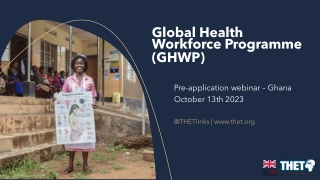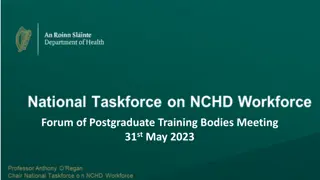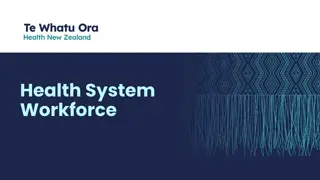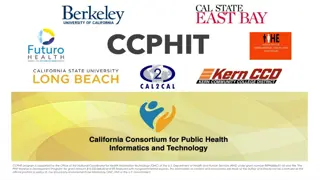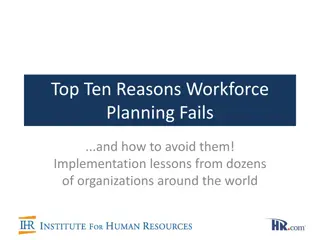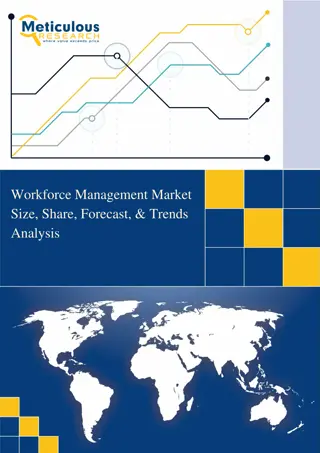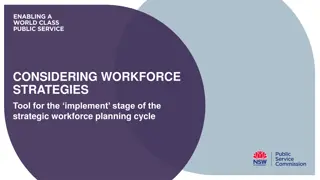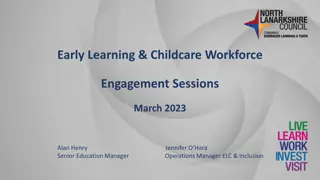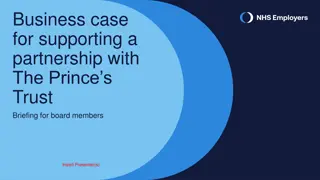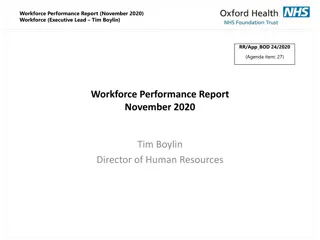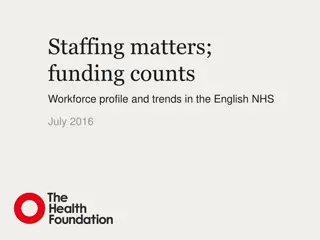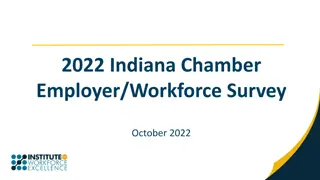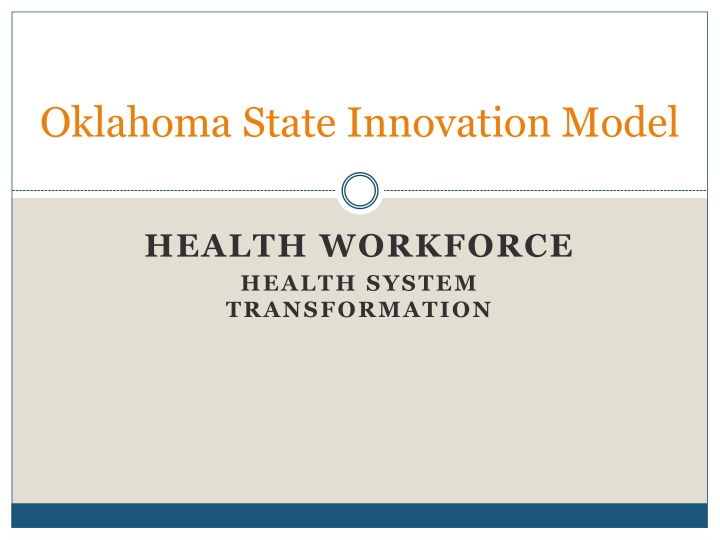
Oklahoma State Innovation Model Health Workforce Transformation
"Discover how the Oklahoma State Innovation Model is revolutionizing health workforce through value-based analytics tools and multi-payer data for system transformation. Updates, proposed timeline, stakeholder roles, and more included."
Download Presentation

Please find below an Image/Link to download the presentation.
The content on the website is provided AS IS for your information and personal use only. It may not be sold, licensed, or shared on other websites without obtaining consent from the author. If you encounter any issues during the download, it is possible that the publisher has removed the file from their server.
You are allowed to download the files provided on this website for personal or commercial use, subject to the condition that they are used lawfully. All files are the property of their respective owners.
The content on the website is provided AS IS for your information and personal use only. It may not be sold, licensed, or shared on other websites without obtaining consent from the author.
E N D
Presentation Transcript
Oklahoma State Innovation Model HEALTH WORKFORCE HEALTH SYSTEM TRANSFORMATION
OSIM Project will design a value-based analytics tool which will use multi-payer claims information, Health Information Exchange, Electronic Health Records and other data sets to be used to accelerate and support health system transformation in Oklahoma.
OSIM Updates February 1 is the official start date for the grant Final amount to be awarded 2 million: 195,000 in personnel costs 87, 844 in supplies, travel and other 1, 667, 860 in contracts The interview process for OSIM Director and Coordinator positions is complete. Tentative offers were made and accepted New CHIE staff has been hired 2 out of 6 Health Planning Coordinators 2 Data Analysts 1 out of 2 Administrative Assistants
2015 OSIM PROPOSED TIMELINE OSIM Deliverables HIT - EHR Adoption Analysis - HIE Environmental Scan - VBA tool adoption proposal HF and HEE - Actuarial Analysis Market effects on health care transformation Analysis of care delivery models in Oklahoma High-cost delivery services Financial forecast of new delivery models HW - Workforce assessment - Program Evaluation Select contractors Develop Scope of Work (SWO) Facilitate planning activities for OSIM Jan 2015 Jan Apr Notify stakeholders of OSIM award By Jan 20, 2016 TA team incorporates final feedback CMS Mar 30 Stakeholder Engagement Plan By Jan 16 Hire OSIM Staff & Develop initial SOW Nov Dec TGA Public Comment CMS Due dates between Mar Oct Jan 31 2016 grant end date TGA Submission Feb 1 Grant start date October TA team works with contractors and OSIM staff to finalize TGA draft CMS May 30 1 Qtr. Rep CMS Aug 30 2 Qtr. Rep CMS Nov 30 3 Qtr. Rep Feb 20 Implementation of Tribal Advisory Board CMS Apr 30 2016 Final report OSIM ongoing assessment by CMS Mar Nov OSIM Deliverable Technical Assistance team (TA) develops TGA Feb May Initial OSIM Project & Goals Presentation Tribal Advisory Meeting Jun Sep Feedback Collection Tribal Advisory Meeting Oct Dec Presentation of Final Report Formal Tribal Consultation Jan Dec TA team Stakeholder Engagement and follow-up meetings Health Information Technology: HIT Health Finance: HF Health Efficiency & Effectiveness : HEE Health Workforce: HW Test Grant Application: TGA Geographic area breakdown for advisory meetings
Stakeholder Roles Active consultants for OSIM activities Subject Matter Experts involved in the analysis and recount of specific topics of interest for the actuarial analysis Participating in reviewing and endorsing different OSIM deliverables
OSIM Contracts Stakeholder Engagement: recruitment, coordination, and organization of stakeholder meetings Technical Assistance: prepare documents for CMS throughout OSIM planning year 1 Actuarial Analysis: analyze impacts of health innovation Health Care Data Research: evaluate EHR, HIE, and create roadmap for VBA tool Health Workforce Assessment: examine current health workforce environment, issues, and influences Program Evaluation Design & Quality Measurements: roadmap for evaluation and implementation of proposed activities/projects
OHIP/OSIM Alignment OHIP Health Workforce Goals Coordinated statewide efforts including data collection and analysis Identify critical health occupations and supply/demand gaps Recommend policy and programs that support and retain an optimized health workforce OHIP/OSIM Strategies Define roles, functions and parameters for stakeholders Explore/Assess best practices in health workforce data collection and analysis Assess and evaluate current state recruitment and incentive strategies Assess barriers to health workforce flexibility and optimization Conduct stakeholder engagement process to determine appropriate, feasible models of care for a range of Oklahoma communities
OSIM Contract Deliverables Comprehensive assessment(s) of health workforce in Oklahoma (Due July 1, 2015) Assessment of scope of practice, prescriptive authority, and competencies and continuing education requirements for all licensed and certified health professionals with a comparison of Oklahoma to other states Identification of gaps between scope of practice and competencies for health professions including at a minimum, pharmacists, physician assistants, registered nurses, advance practice registered nurses, dental hygienists, and dental assistants Assessment of existing telemedicine competencies and identification of gaps between existing and needed competencies Identification, mapping and assessment of service delivery models for primary care physicians, dentists, and behavioral health providers Assessment of policies, rules, reimbursement and regulations affecting health care services with a comparison of Oklahoma to other states Assessment of telemedicine reimbursement, rules and regulations including identification of barriers to implementation Assessment of state capacity and strategies for addressing identified workforce issues (Due July 1, 2015) Assessment of state s capacity for data collection and analysis and health workforce program planning and development. (What is the state s capacity to monitor health workforce, make informed decisions, and respond to identified needs in the health system? Are boards, commissions, task forces, and data sources in place and functioning? How does Oklahoma compare to other states?)
OHIP/NGA Policy Academy Center for Health Innovation and Effectiveness & OHIP Partners Assessment of salaries by region and cost of practice (liability and training) Assessment and analysis of health professional training programs including residency slots, clinical rotation capacity, and faculty Assessment of loan repayment programs, scholarships, and other financial incentives to practice in rural and underserved areas or in professional shortages (primary care physicians, dentists); also assessment of programs aimed at recruiting disadvantaged or rural students

